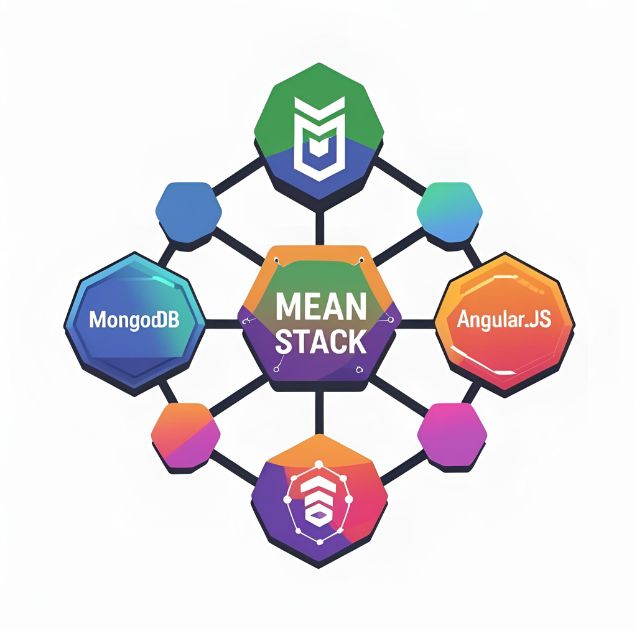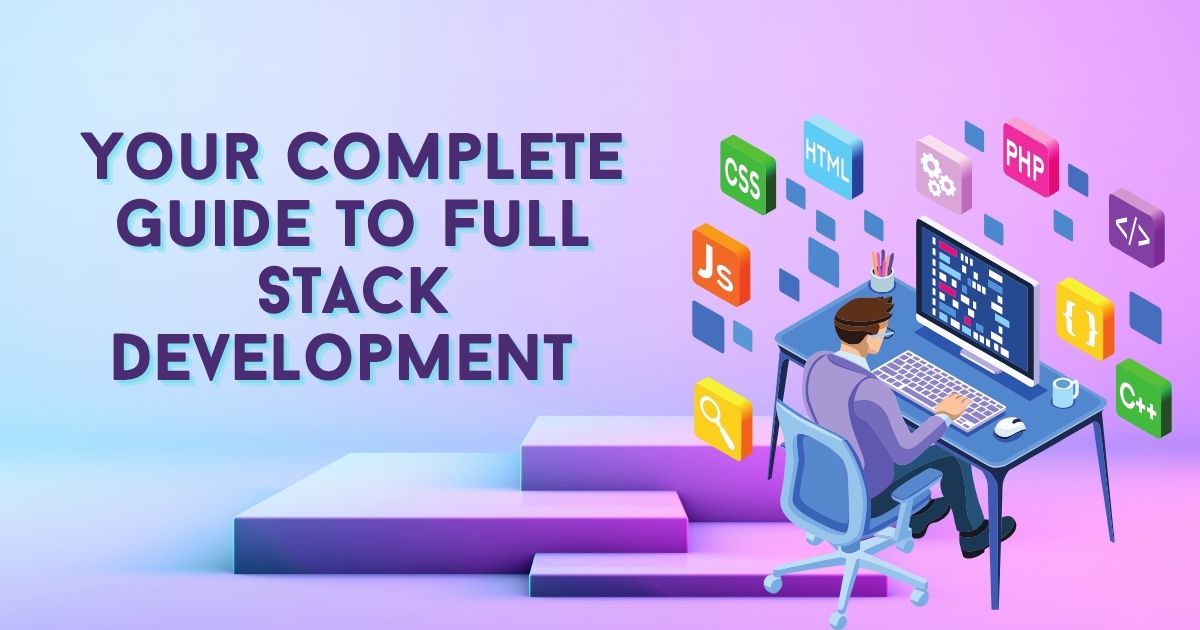Full-stack development has become one of the most sought-after skills in the tech industry. But what exactly does it mean to be a full-stack developer, and how can you build the expertise needed to excel in this field?
This comprehensive guide will walk you through everything you need to know about full-stack development. You’ll discover the essential technologies, learn about different career paths, and get practical advice for starting your journey as a full-stack developer.
What Is Full Stack Development?

Full-stack development refers to working on both the front end and back end of web applications. A full-stack developer has the skills to handle everything from user interface design to server-side logic and database management.
Think of it like being a versatile chef who can handle every aspect of a restaurant kitchen. While some chefs specialize in pastries or grilling, a full-stack chef can prepare appetizers, main courses, and desserts with equal skill.
Frontend vs Backend: Understanding the Difference
The front end is what users see and interact with directly. This includes buttons, menus, forms, and visual elements. Frontend developers focus on creating smooth, responsive user experiences.
The backend handles the behind-the-scenes work. It manages databases, processes user requests, handles authentication, and ensures data flows correctly between different parts of the application.
Full stack developers bridge these two worlds, understanding how frontend and backend components work together to create complete applications.
Essential Technologies for Full Stack Development
Frontend Technologies
HTML, CSS, and JavaScript form the foundation of front-end development. HTML structures content, CSS handles styling and layout, and JavaScript adds interactivity and dynamic behavior.
Frontend Frameworks like React, Vue.js, and Angular help developers build complex user interfaces more efficiently. These frameworks provide pre-built components and tools that speed up development.
CSS Frameworks such as Bootstrap, Tailwind CSS, and Bulma offer ready-made styling solutions. They help developers create responsive, professional-looking interfaces without writing everything from scratch.
Backend Technologies
Server-side languages include JavaScript (Node.js), Python, Java, PHP, Ruby, and C#. Each language has its strengths and is suited for different types of projects.
Web Frameworks like Express.js (Node.js), Django (Python), Spring (Java), and Laravel (PHP) provide structure for building robust backend applications.
Database Technologies split into two main categories:
- SQL databases like MySQL, PostgreSQL, and SQLite use structured query language and work well for complex relationships
- NoSQL databases like MongoDB, Redis, and Cassandra offer flexibility for handling various data types
Development Tools and DevOps
Version Control with Git allows developers to track changes, collaborate with teams, and manage different versions of their code.
Cloud Services like AWS, Google Cloud, and Microsoft Azure provide hosting, storage, and deployment solutions for web applications.
Containerization tools like Docker help developers package applications with all their dependencies, making deployment more consistent and reliable.
Popular Full Stack Development Approaches
MEAN Stack

MongoDB, Express.js, Angular, and Node.js create a JavaScript-based development environment. This stack allows developers to use JavaScript throughout the entire application.
MERN Stack
Similar to MEAN, but uses React instead of Angular for the front end. Many developers prefer React’s component-based approach and larger ecosystem.
LAMP Stack
Linux, Apache, MySQL, and PHP represent one of the oldest and most established full-stack combinations. It remains popular for content management systems and traditional web applications.
Django + React
This combination pairs Python’s Django framework with React for the front end. It’s excellent for data-heavy applications and provides strong security features.
Skills Beyond Technical Knowledge
Problem-Solving and Debugging
Full-stack developers encounter issues across multiple layers of an application. Strong problem-solving skills help identify whether issues stem from frontend code, backend logic, database queries, or server configuration.
Communication and Collaboration
Full-stack developers often work with designers, product managers, and other developers. Clear communication helps ensure everyone understands requirements and technical constraints.
Project Management
Understanding how to break down complex projects into manageable tasks makes development more efficient. Many full-stack developers learn project management methodologies like Agile or Scrum.
Continuous Learning
Technology evolves rapidly. Successful full-stack developers stay current with new frameworks, tools, and best practices through online courses, documentation, and community resources.
Career Opportunities in Full Stack Development
Startup Environments
Startups often prefer full-stack developers who can wear multiple hats and work on different parts of the application as needed. These roles offer variety and the chance to influence product direction.
Enterprise Development
Large companies may have full-stack developers work on internal tools, customer-facing applications, or integration projects that connect different systems.
Freelancing and Consulting
Experienced full-stack developers can offer end-to-end web development services to clients. This path provides flexibility and the opportunity to work on diverse projects.
Technical Leadership
Senior full-stack developers often move into architecture roles, where they design system structures and guide technical decisions for development teams.
Getting Started with Full Stack Development
Choose Your Learning Path
Self-Directed Learning works well for motivated individuals. Free resources like freeCodeCamp, Mozilla Developer Network, and YouTube tutorials provide comprehensive coverage of full-stack concepts.
Bootcamps offer intensive, structured programs that can prepare you for entry-level positions in a few months. They provide hands-on projects and career support.
Computer Science Degrees provide strong theoretical foundations and are valuable for certain career paths, though they’re not strictly necessary for full stack development.
Build a Learning Plan
Start with frontend basics: HTML, CSS, and JavaScript. Once comfortable with these, add a frontend framework like React or Vue.js.
Move to backend development by learning a server-side language and framework. Node.js works well if you want to stick with JavaScript initially.
Learn database basics with both SQL and NoSQL options. Understanding how to design efficient database schemas is crucial for backend development.
Practice version control with Git from the beginning. Even personal projects benefit from proper version control habits.
Create Portfolio Projects
Build applications that demonstrate your full stack skills. A simple blog, task management app, or e-commerce site showcases your ability to work across the entire development stack.
Include projects that show different aspects of your skills: responsive design, user authentication, database integration, and API development.
Deploy your projects to platforms like Heroku, Netlify, or Vercel so potential employers can see working applications.
Common Challenges and How to Overcome Them
Avoiding the “Jack of All Trades” Trap
While full stack developers work across many technologies, avoid spreading yourself too thin. Focus on becoming proficient in one stack before exploring others.
Staying Current with Technology
The web development landscape changes quickly. Follow industry blogs, join developer communities, and set aside time for regular learning to stay up-to-date.
Managing Complexity
Full-stack applications can become complex quickly. Learn to break down problems into smaller pieces and use design patterns that keep code organized and maintainable.
Your Next Steps in Full Stack Development
Full-stack development offers an exciting career path with numerous opportunities for growth and creativity. The combination of technical skills, problem-solving abilities, and continuous learning makes it both challenging and rewarding.
Start by choosing a technology stack that aligns with your interests and career goals. Focus on building strong fundamentals before moving to advanced topics. Most importantly, practice by building real projects that solve actual problems.
The journey to becoming a skilled full-stack developer takes time and dedication, but the versatility and opportunities it provides make it a valuable investment in your future.







